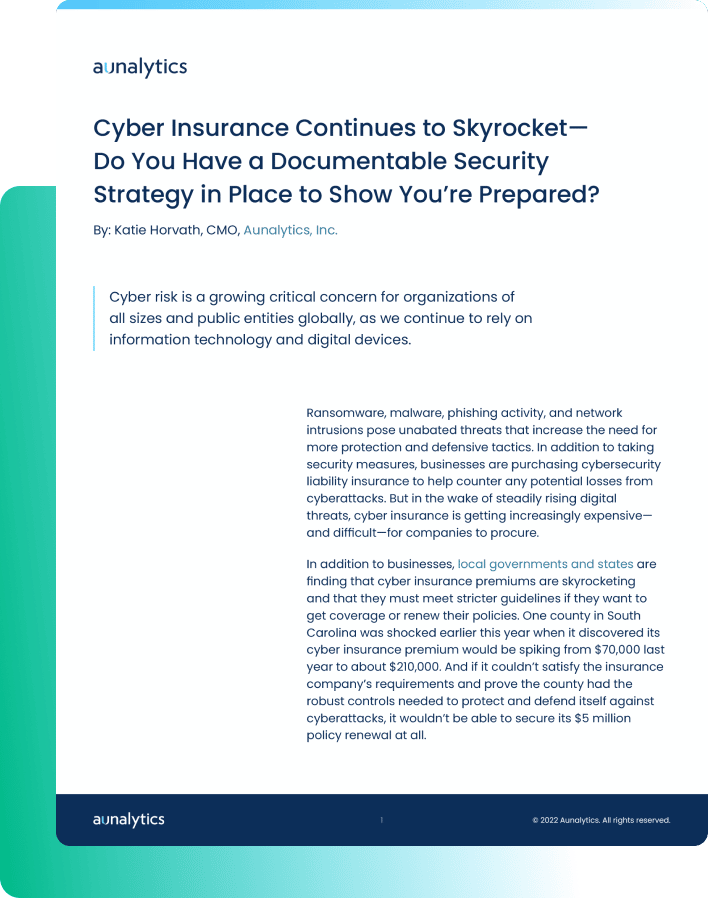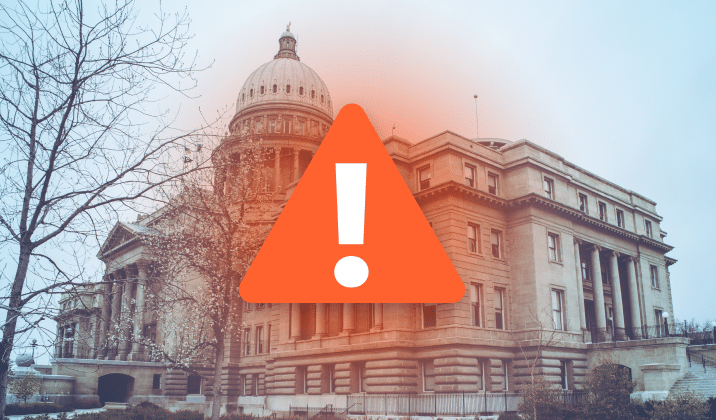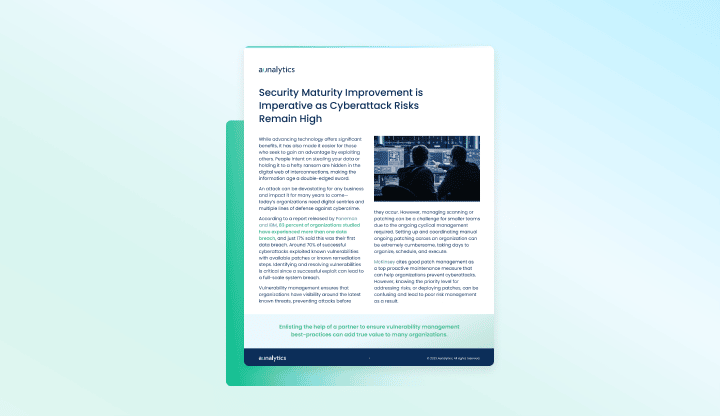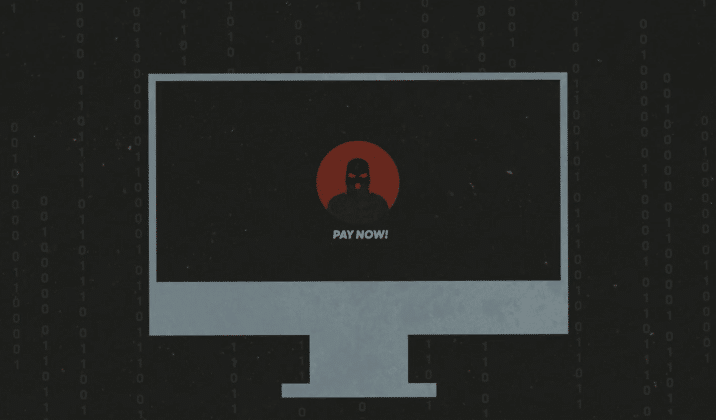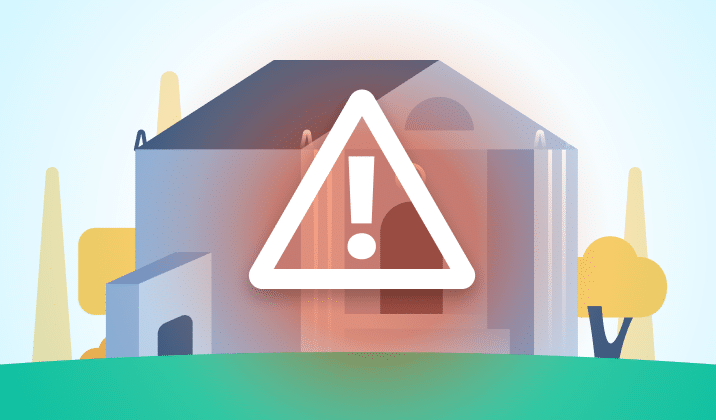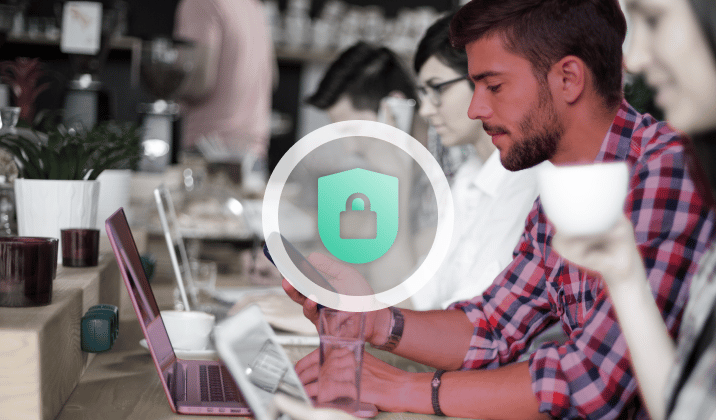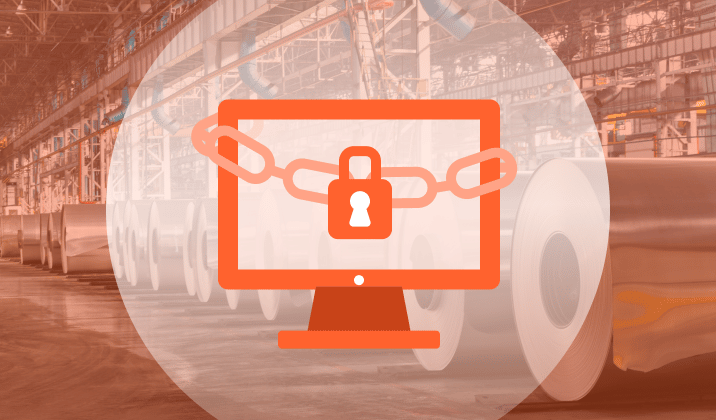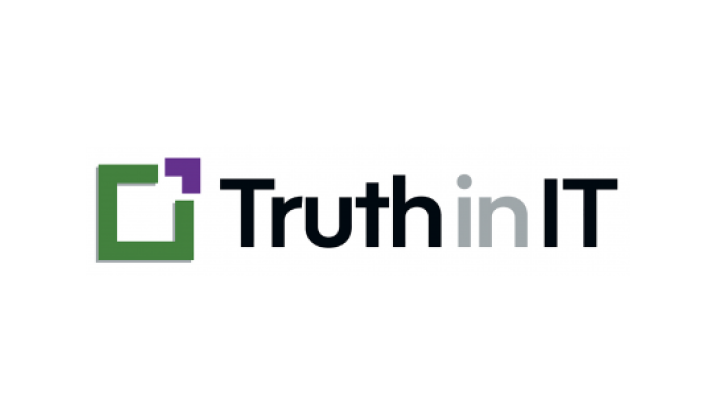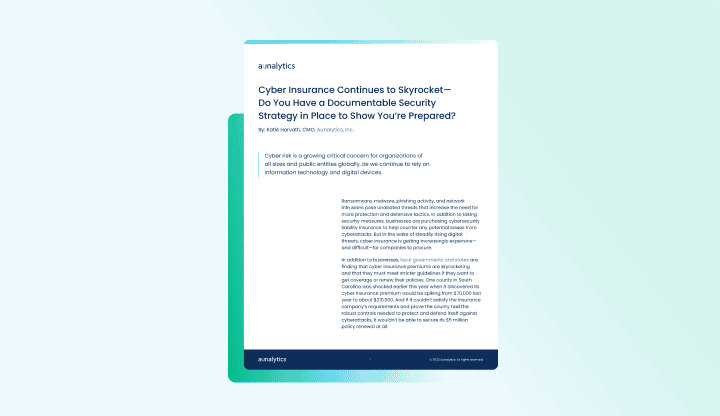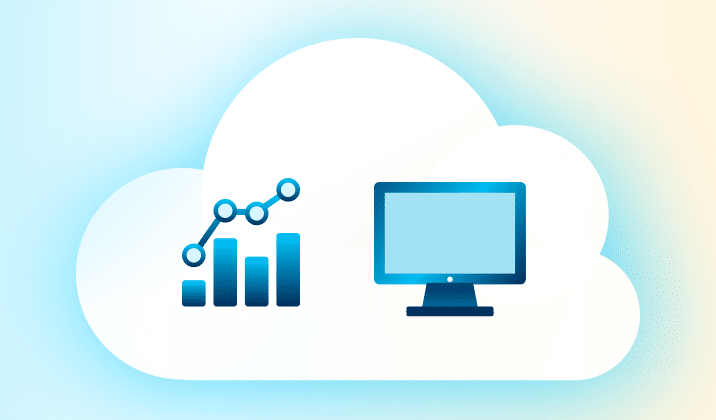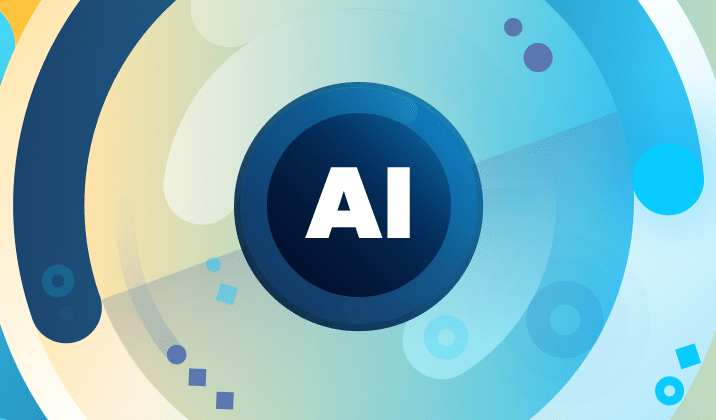Defense Manufacturers Face Huge Risks from Malware
Manufacturers that work with the Department of Defense (DoD) are immune to attacks of any kind, right? Wrong. Like any industry, the companies that produce equipment and military systems are just as vulnerable to malware.
Malware is a blanket term used for any kind of software that is designed to cause harm to a digital environment like your office or factory spaces. It can damage devices, computer systems, and networks while bad actors ensure all business functions come to a screeching halt—frozen in place while your files are accessed, stolen, and possibly even sold. With such valuable, and often proprietary, information, defense manufacturers may be an even bigger target than others and can lead to a national security incident. What are some ways that malware can cause serious issues for defense manufacturers?

Disrupted Operations and Processes
The first issue is the most obvious—by using malware, hackers can access your network and put a halt to your internal processes.
Shutting down operations is a big deal for anyone, but when you work with the DoD, the delays and backups during equipment production and delivery of goods can lead to significant delays that impact military readiness.
Theft of Intellectual Property
In addition to being used to disrupt operations, malware can also be used to steal and encrypt or sell sensitive information connected to the development and production of equipment made for the DoD.
Bad actors can disrupt or shut down vital systems, encrypt your data, and openly steal your proprietary information in hopes you will pay them to restore it. It is exceptionally rare that a company receives all its data back after a ransomware attack and there is no way to guarantee the data wasn’t copied before being returned. Additionally, once you’ve paid the first ransom, it has become increasingly common for bad actors to charge additional ransoms before returning your data.
Due to the sensitive nature of the information, it can be used to sell competing products, sell counterfeits, and more, potentially giving an unfair advantage.
Compromised Security
You may have seen this coming. Theft of intellectual property often leads to every DoD manufacturer’s nightmare—especially where drones or other vital systems concerned—compromised security.
Since malware can be used to attack and enter the compromised security of a manufacturing company, including its networks, it allows attackers direct access to sensitive, and sometimes dangerous, equipment. You don’t want to give away your company’s ‘nuclear football’.
What now?
Thankfully you can make this an ‘if’ not a ‘when’ situation—there are ways that such attacks can be avoided and guarded against. In addition to the advanced security measures that are recommended, employee cybersecurity training must be implemented. It’s not enough to have good security—everyone with access to your company’s data must be able to recognize a bad actor when they see one.
Partnering with a Managed IT Services company that specializes in protecting against cybersecurity threats means you can focus on what you do best—helping the DoD protect our country. As one of the only FedRAMP certified companies in the Midwest, you can depend on Aunalytics to keep your sensitive data safe. Don’t settle for an out-of-the-box antivirus and nothing else. Ensure that your location and data are not only secure, but that they will remain that way—no matter what the threat landscape looks like.
Local and State Government Cyberattacks Prove that Security is a Necessity
Cyberattacks are a constant threat to organizations of all sizes. State and local governments are no different, having experienced significantly more cyberattacks than they did in previous years, and are at very high risk of bad actors slipping into their networks. To gain a better understanding of the current attack environment and track changes over time in ransomware trends, Aunalytics security partner Sophos commissioned an independent, vendor-agnostic survey of 5,600 IT professionals across multiple industries in mid-sized organizations across 31 countries. While it’s true cyber insurance has been playing a greater role in helping organizations improve their ability to recover from attacks, survey responses clearly indicate that ransomware poses a rising threat to government organizations.
Government Cyberattacks Increase From Previous Years
Ransomware attacks have increased significantly over the past year—58% of state and local government organizations surveyed were hit by an attack in 2021, up 70% from 2020. Bad actors are now considerably more capable of attacking organizations and executing harmful tactics at scale. The Ransomware-as-a-Service (RaaS) model is one cause of last year’s increased attacks, as the required skill level for bad actors to hamper the day-to-day operations of an organization has gone down significantly.
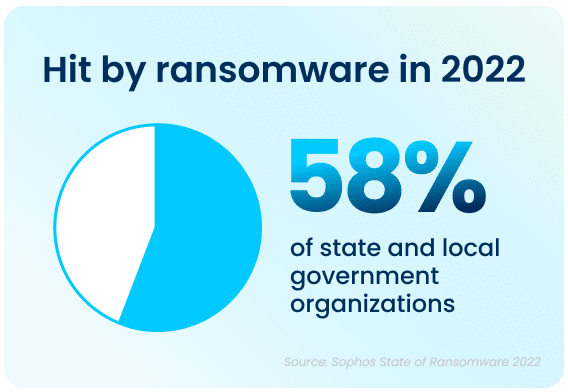
The top ten states that had to deal with the maximum amount of total ransomware attacks in the public sector in 2021 were California, who experienced the most attacks total, Ohio, Illinois, Kentucky, Maine, Maryland, and Missouri. While California took the lion’s share of attacks, with 8 major ransomware incidents, the other six states had four major incidents each.
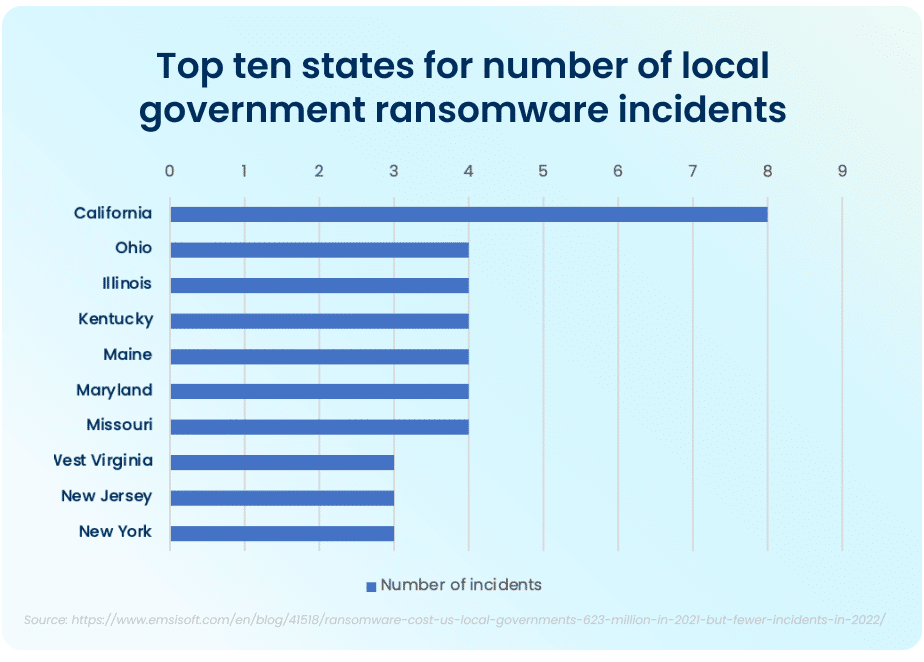
FBI Cyber Division Survey Lists Examples of Ransomware Attacks
The Federal Bureau of Investigation (FBI) Cyber Division lists examples of several ransomware attacks that impacted state and local government organizations in their 2022 Private Industry Notification. This list contains evidence showing the impact these attacks can have on local communities.
For example, in January 2022, following a ransomware attack, a US county had to take all their systems offline and close all public locations in order to run an emergency response plan and restore all their data from backups. This action disabled all the cameras in the local county jail and deactivated automatic doors, resulting in severe safety concerns and a complete lockdown of the facility. A different county had their data—with residential and personal data—held ransom in an attack. When the ransom was not paid, all of the data was posted on the Dark Web in retaliation.
Rising Complexity of Ransomware Attacks
Apart from the rising prevalence of these attacks, the sheer complexity of each attack is also on an upwards trajectory. While the manufacturing and production industry reported the lowest rate of ransomware attacks, over half of all respondents reported their organization was injured by bad actors. The reality is that every organization is at high risk of cyberattack. In 2021, 59% percent of government organizations who experienced cyberattacks saw the complexity of the attacks increase, while a similar 59% saw an increase in the overall volume of cyberattacks.
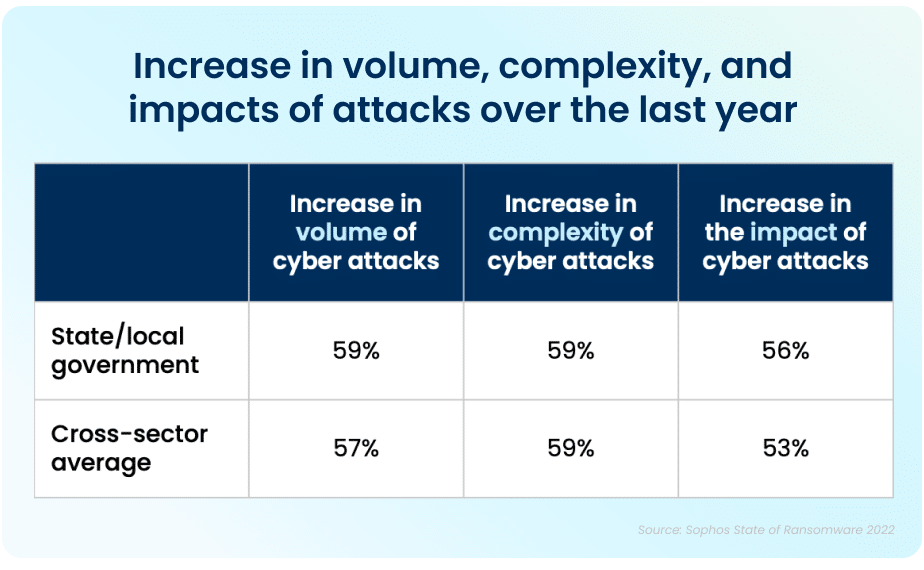
Data Recovery Rates Are Improving
While the increase in cyberattacks paints a bleak picture, there is a silver lining to this dark cloud. Ninety-nine percent of government organizations were able to get at least some of their encrypted data back. The top method used to restore data was performed via existing backups, which were used by 63% of organizations whose data was encrypted in an attack. Unfortunately, despite the utilization of backups, 32% of the affected organizations still had to pay a ransom to ensure that more of their data was restored.
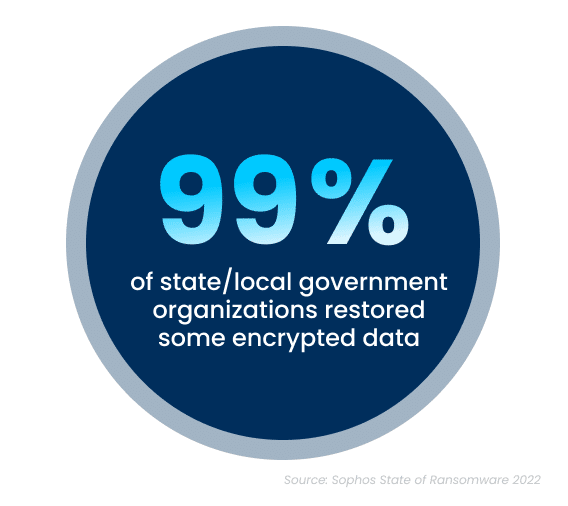
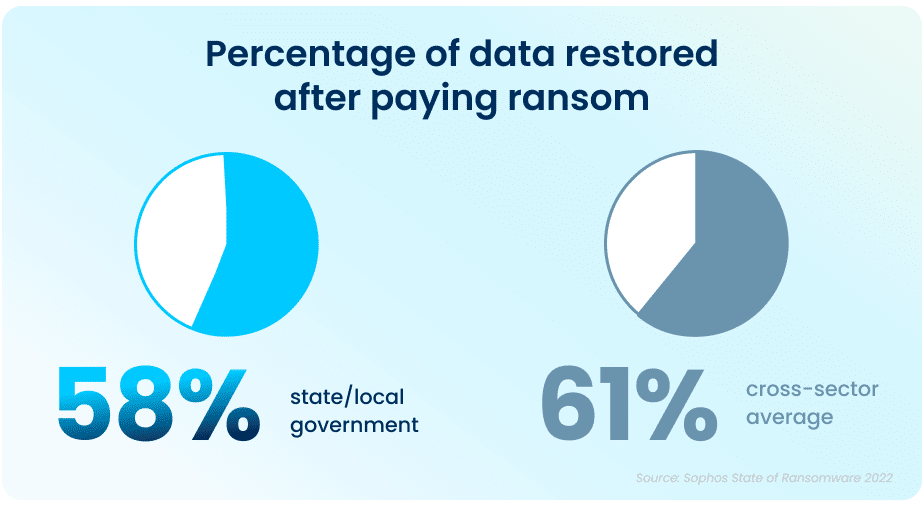
While paying a ransom typically allows organizations to get some data back, it is proving to be less effective than in years past. On average, in 2021, organizations that paid a ransom only got back 58% of their data, a considerable drop from 70% in 2020.
In April and June 2022, respectively, the states of North Carolina and Florida were the first states to prohibit state and local government organizations from paying ransoms to any bad actors. Arizona, Pennsylvania, Texas and New York are considering similar legislation. While the exact impact of this cannot be determined yet, this is expected to dissuade ransomware attacks on all organizations.
This highlights the importance of employing multiple methods to restore data—utilizing backups in particular can improve the speed of recovery and increase the amount of data that can be recovered in the event of an attack.
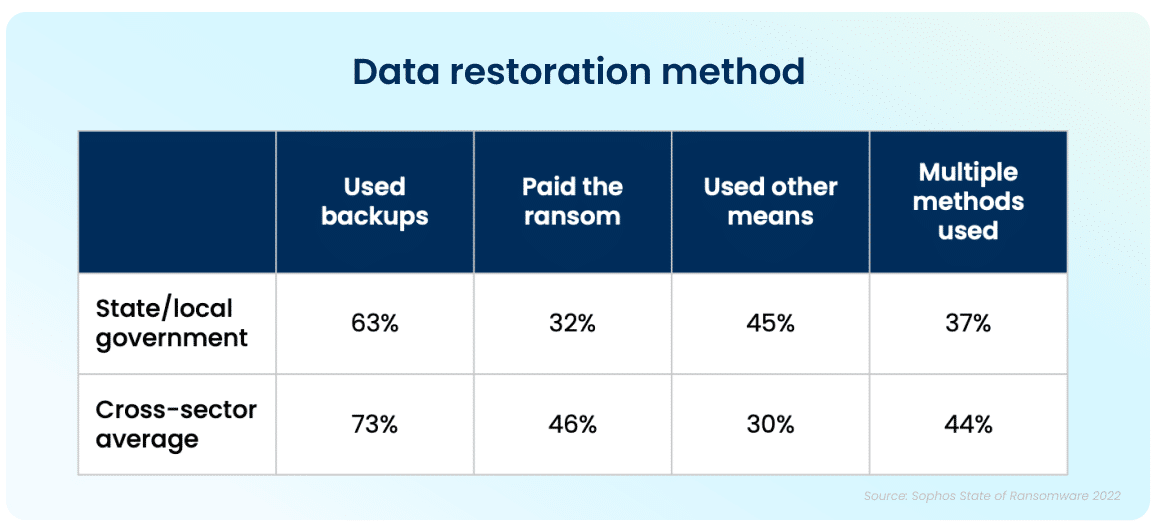
But It Doesn’t End There
The Sophos State of Ransomware In State and Local Government 2022 survey has revealed that ransomware continues to be an imminent threat for state and local government organizations. For many, choosing to work with an experienced partner with expertise in cybersecurity not only improves your chances of getting approved for the right amount of cyber insurance coverage, but can also ensure that companies see a higher return on investment, and improved ability to both prevent and mitigate attacks in the future. Aunalytics provides Disaster Recovery Services, which is further coupled with a comprehensive backup and archival strategy. This allows state and local government organizations like yours to remain confident so that you are prepared should you encounter a disaster event. We partner with industry leaders to replicate your critical infrastructure so you are prepared for anything.
Security Maturity Improvement is Imperative as Cyberattack Risks Remain High
Security Maturity Improvement is Imperative as Cyberattack Risks Remain High
While advancing technology offers significant benefits, it has also made it easier for those who seek to gain an advantage by exploiting others. An attack can be devastating for any business and impact it for many years to come—today’s organizations need to move toward security maturity by utilizing multiple lines of defense against cybercrime.
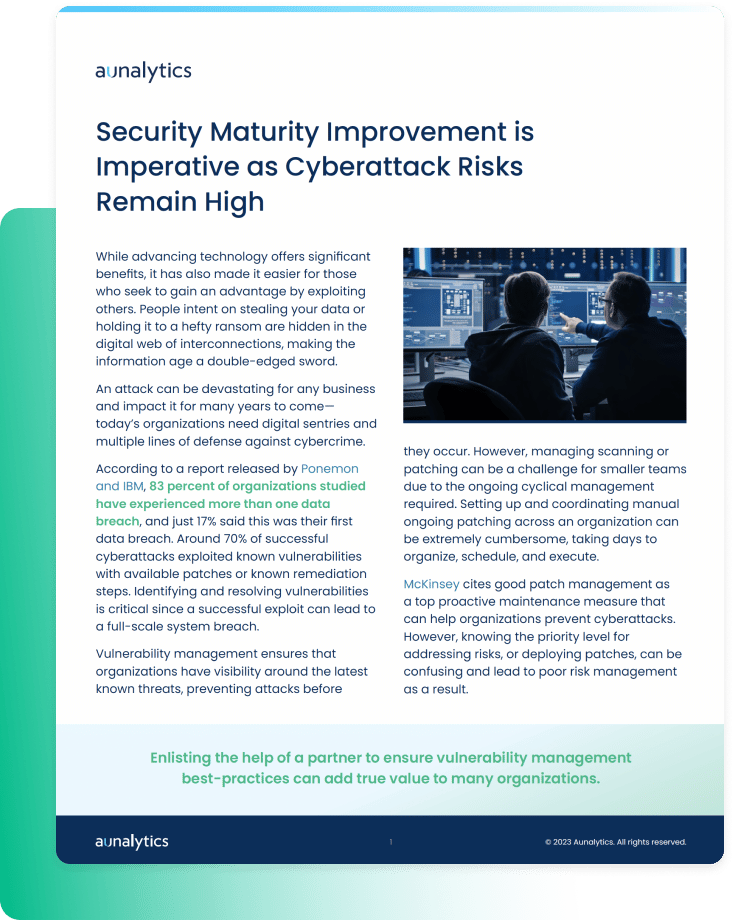
Fill out the form below to receive a link to the article.
Aunalytics is a data platform company. We deliver insights as a service to answer your most important IT and business questions.
Security Maturity Improvement is Imperative as Cyberattack Risks Remain High
Security Maturity Improvement is Imperative as Cyberattack Risks Remain High
While advancing technology offers significant benefits, it has also made it easier for those who seek to gain an advantage by exploiting others. An attack can be devastating for any business and impact it for many years to come—today’s organizations need to move toward security maturity by utilizing multiple lines of defense against cybercrime.
When Was the Last Time You Checked on Your Internet Security?
Internet security—a combination of security measures put into place to protect any transaction or activity made over the internet—is one of the most necessary forms of security your business could possibly have.
Everything we do, every day, is virtually always online—even though we sit next to Deborah, we usually send her files through a document sharing program like SharePoint or Google Docs. We don’t walk over with a paper file and hand it to her often, if ever. When thinking of our daily interactions with the internet in corporate environments, it becomes more and more startling that many of us are not aware what our role in our company’s corporate security actually is. Some think it’s remembering to change your password, while others know there are specific steps you can take to better secure your network from the malicious creepy crawlies.
They're Everywhere
Security threats are as widely varied as the content on the internet and can include everything from the well-known malware and phishing to Wi-Fi threats, computer worms, and botnets.
How many people do you know that take their work devices with them to coffee shops for a change of pace? As safe and normal as this may seem, there are multiple kinds of Wi-Fi threats that can piggyback onto public Wi-Fi and open networks. The three most common types of Wi-Fi threats are Man-in-the-Middle (MitM), Rogue Networks, and Packet Sniffing.

Let’s break this down a little bit:
- Man-in-the-Middle (MitM) attacks are generally the most common type of Wi-Fi threat. In its most basic form, a MitM attack is when a bad actor is able to intercept and read messages between users who believe they are only speaking to each other privately, essentially eavesdropping on their conversation and any confidential information that is being shared.
- Rogue Networks are fake Wi-Fi networks that attackers set up to confuse users into giving hackers access to their devices. Rogue networks can easily masquerade as trusted networks, especially those at locations like your favorite bookstore or coffee shop. If you see a guest network, only use it if the network is secured and you need a password to log into the network. This can help ensure your computer and other tech is better protected and is less likely to end up on a rogue network.
- Packet Sniffing, sometimes known as Packet Analyzers, can monitor traffic on a network. This malicious attack can intercept data while it is being transmitted across your network and provide hackers with details on the data package’s contents. Using this method, bad actors can also introduce errors that can corrupt your system.
Wi-Fi threats aren’t the only internet threats to your corporate security. Botnets, a network of private computers that are infected with malicious software and often controlled by a single user, are most often used for denial-of-service (DoS) attacks, and sending out spam messages for users in your network. Similarly, a computer worm, a software that can copy itself multiple times, can spread across your network quickly, leaving mass destruction in its wake.
What Now?
With the threat of bad actors finding a hole in your network at any point in time, it’s impossible to ignore your cyber security. Risks are becoming higher as viruses and malware become increasingly complex, setting companies up for difficulties when navigating the process of recovering data, and further difficulties of finding easily obtainable cyber security insurance following a security event. Finding and utilizing a trusted partner can help you keep your network safe and consistently monitored with services like a 24/7/365 monitored Security Operations Center (SOC), help attaining industry security compliance requirements, and developing a Backup and Disaster Recovery (DR) plan for when the unexpected strikes.
Ransomware Attacks in Manufacturing Pose An Increasing Threat
Cyberattacks are a constant threat to organizations of all sizes. Manufacturing and production industries may have experienced fewer cyberattacks than other industries, but companies are still at risk from bad actors. To gain a better understanding of the current attack environment and track changes over time in ransomware trends, Aunalytics security partner Sophos commissioned an independent, vendor-agnostic survey of 5,600 IT professionals in mid-sized organizations across 31 countries. Out of all the respondents, 419 were from the manufacturing and production industry. This survey was conducted in January and early February of 2022. While it’s true cyber insurance has been playing a greater role in helping organizations improve their ability to recover from attacks, survey responses clearly indicate the rising threat ransomware poses to the manufacturing industry.
Cyberattacks Are Up From Previous Year
Ransomware attacks have increased significantly over the past year—55% of manufacturing and production organizations surveyed were hit by an attack in 2021, up 36% from 2020. Bad actors are now considerably more capable of attacking businesses and executing harmful tactics at scale. The Ransomware-as-a-Service model is one cause of this year’s increased attacks, as the required skill level for bad actors to hamper the day-to-day operations of an organization has gone down significantly.
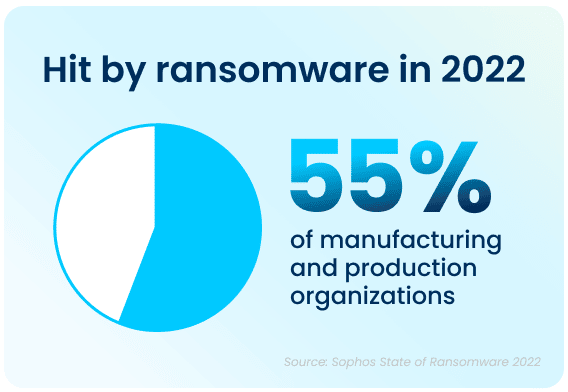
Apart from the rising prevalence of these attacks, the sheer complexity of each attack is also on an upwards trajectory. While the manufacturing and production industry reported the lowest rate of ransomware attacks, but, with over half of all respondents in all surveyed industries reporting that their company was been injured by bad actors, the reality is that every organization is at high risk of attack. In 2021, 57% of attacks in the manufacturing and production industry resulted in important data being encrypted. Additionally, 59% percent of organizations who experienced cyberattacks saw the complexity of the attacks increase, while 61% saw an increase in the overall volume of cyberattacks.
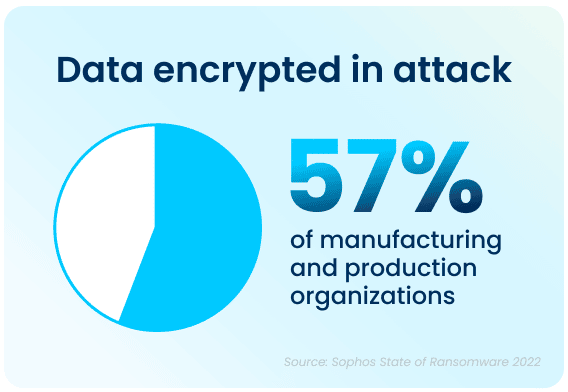
Data Recovery Rates Are Improving
While the increase in cyberattacks paints a bleak picture, there is a silver lining to this dark cloud. 96% of manufacturing and production organizations were able to get some of their encrypted data back. The top method used to restore data was backups, which were used by 58% of organizations whose data was encrypted in an attack. Unfortunately, despite the utilization of backups, a third of the effected organizations still had to pay a ransom to ensure that more their data was restored.
Unfortunately, while paying a ransom typically allows organizations to get some data back, it is proving to be less effective than in years past. On average, in 2021, organizations that paid a ransom only got back 59% of their data, and only 7% of those that paid the ransom got ALL of their data back. This highlights the importance of employing multiple methods to restore data—utilizing backups in particular can improve the speed of recovery and increase the amount of data that can be recovered in the event of an attack.
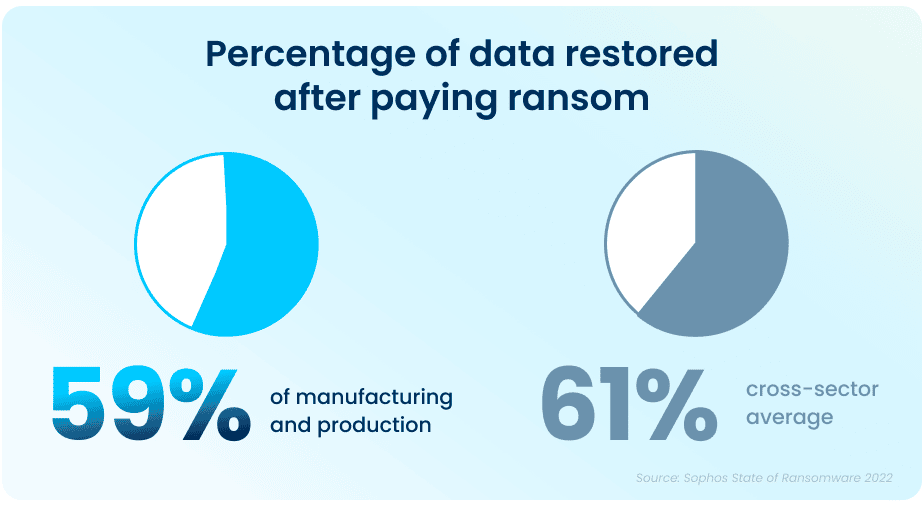
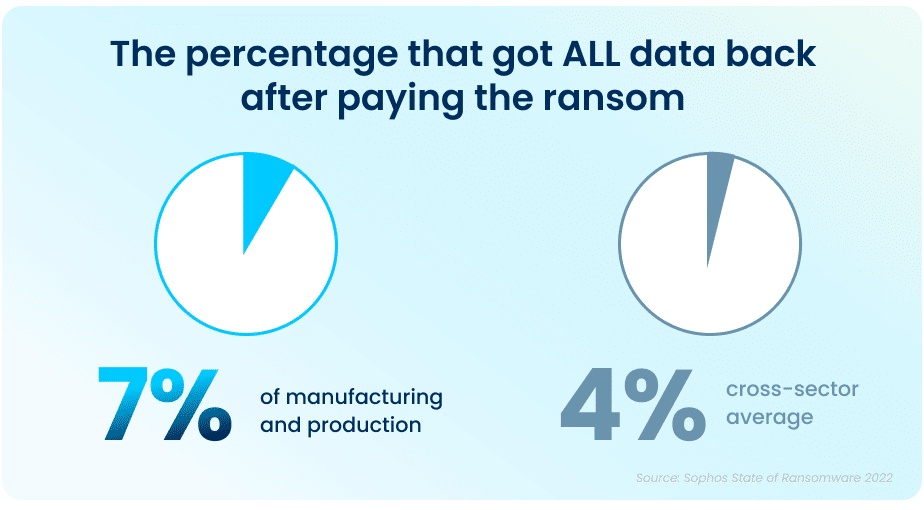
Ransom Payments Have Increased
The average ransom pay-out has seen an exponential increase from what was reported in 2020 data, rising from an average of $147K (USD) to a jaw-dropping $2,036,189 (USD) in 2021.
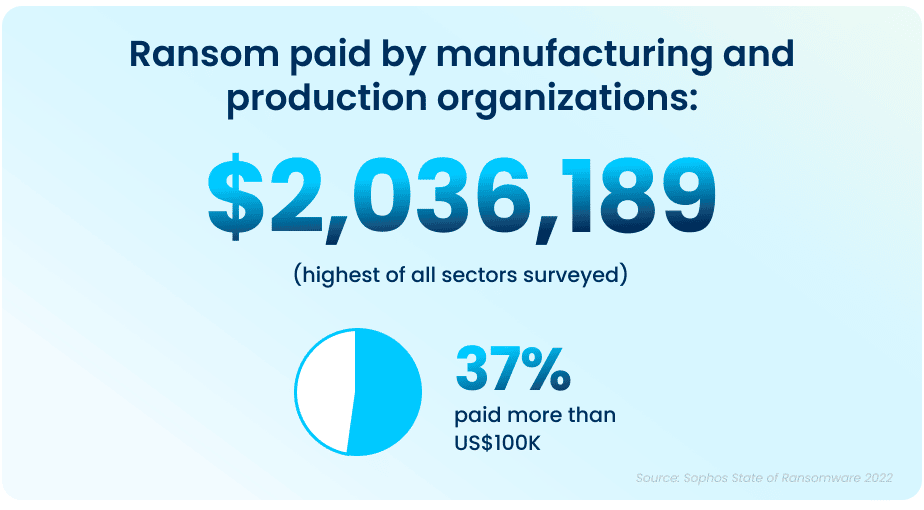
Ransomware Has a Massive Impact on a Company’s Financial Status and Operational Capacity
Even when some of the encrypted data is restored after a cyber-attack, there are additional costs in the form of lost productivity and a decline in operational capacity, which can have a considerable impact on your company. Of those hit by ransomware last year, 77% said their most significant attack impacted their ability to operate, while 71% said it caused them to lose business and/or revenue. The average cost to remediate an attack in 2021 was $1.23M (USD), down from $1.52M (USD) in 2020. This was due in part to cyber insurance providers being able to better guide victims through an effective response more rapidly.
Although there have been improvements in total recovery time over the years, it still took, on average, one week for manufacturing and production organizations to fully recover from the most significant attacks.
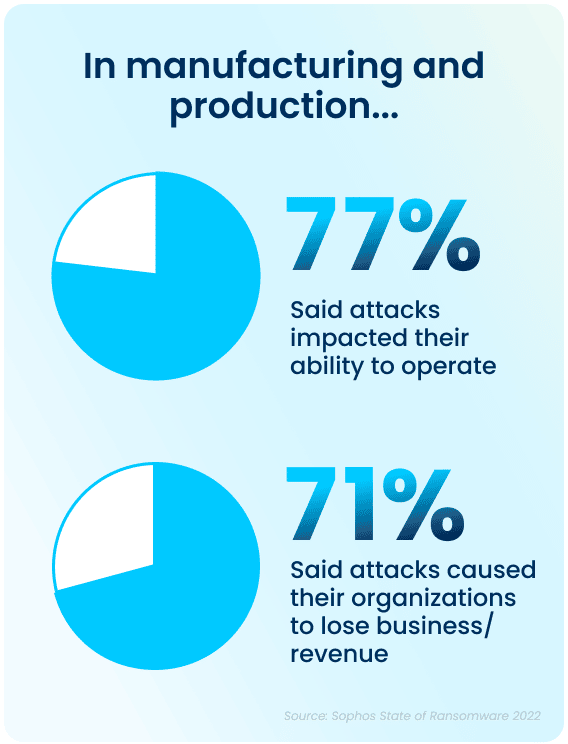
Despite the huge economic costs of ransomware attacks, many organizations are continuing to put their faith in defenses that don’t actually prevent ransomware—only more quickly mitigate its effects. Most of the organizations in the survey who weren’t hit by ransomware in the past year and didn’t expect to be hit in the future cited backups and cyber insurance as reasons why they don’t anticipate an attack. It’s important to note that neither of these elements can actually prevent cyber-attacks.
Simply having security mitigation resources in place does not mean that they will be effective against malicious attacks. Despite having ample resources—in both personnel and technology—organizations will not achieve a high return on investment without a combination of the right technology and expertise to use the technology effectively.
Cyber Insurance Drives Changes to Cyber Defenses
Thankfully, organizations do not have to shoulder the burden of ransomware costs all on their own. The survey found that three out of four manufacturing and production organizations had insurance against ransomware attacks. Organizations that had been previously hit by ransomware attacks in the past were much more likely to have cyber insurance coverage against ransomware. However, many respondents indicated that securing coverage has changed or gotten more difficult to obtain in the past year:
- 56% said the level of cybersecurity they need to qualify is now higher
- 53% said policies are now more complex
- 42% said it is more expensive
- 35% said fewer companies offer cyber insurance
- 30% said the process takes longer
As a result, 97% of organizations that have cyber insurance have made changes to their cyber defenses to improve their cyber insurance position. 70% have implemented new technologies and services, while 63% have increased staff training and educational activities, and 59% have changed processes and behaviors.
But It Doesn’t End There
The State of Ransomware 2022 survey by Sophos has revealed that ransomware continues to be an imminent threat for the manufacturing and production industry. For many, choosing an experienced partner with expertise in cybersecurity not only improves their chances of getting approved for the right amount of cyber insurance coverage, but can also ensure that companies see an higher return on investment and improved ability to both prevent and mitigate attacks in the future.
Catalyst University 2023
Catalyst University 2023
Radisson Plaza Hotel, Kalamazoo, MI
Aunalytics to Attend 2023 Catalyst University
Aunalytics is excited attend Southwest Michigan First’s Catalyst University 2022 in Kalamazoo, MI. Aunalytics is participating as a speaker sponsor and is pleased to present Mitch Albom, who is a best-selling author, journalist, screenwriter, playwright, radio and television broadcaster, and musician.
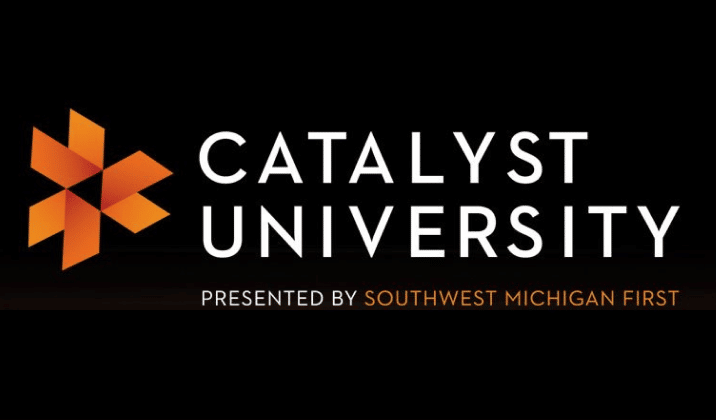
Cyber Insurance Continues to Skyrocket—Do You Have a Security Strategy in Place?
Cyber Insurance Continues to Skyrocket—Do You Have a Documentable Security Strategy in Place to Show You’re Prepared?
Cyber risk is a growing critical concern for organizations of all sizes and public entities globally, as we continue to rely on information technology and digital devices. But in the wake of steadily rising digital threats, cyber insurance is getting increasingly expensive—and difficult—for companies to procure.
